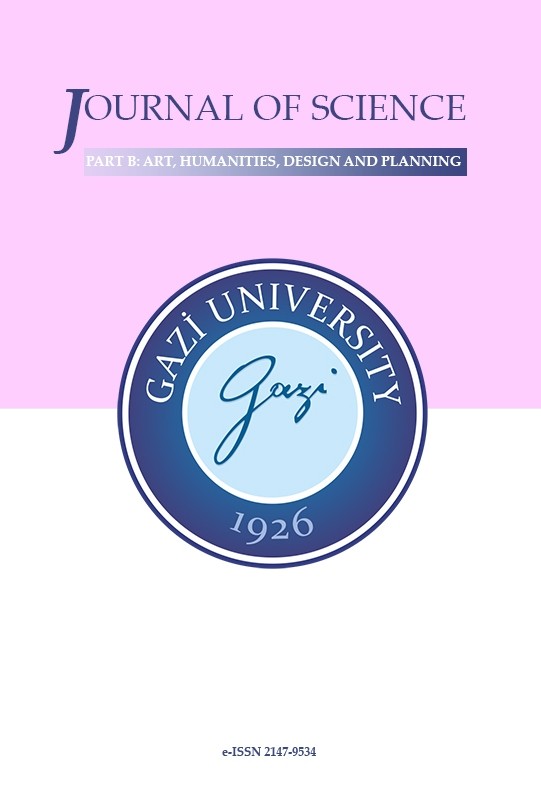PRODUCTION OF THREE-DIMENSIONAL FORM ALTERNATIVES FROM ICONIC BUILDING PLANS IN PARAMETRIC DESIGN ENVIRONMENT
PRODUCTION OF THREE-DIMENSIONAL FORM ALTERNATIVES FROM ICONIC BUILDING PLANS IN PARAMETRIC DESIGN ENVIRONMENT
Parametric design, Digital architecture,
___
- [1] C. Hernandez, Thinking parametric design: introducing parametric Gaudi. Design Studies Vol 27 No. 3, 310-324, 2006. [2] D. Harel, Algorithmics: the spirit of computing (2nd ed.). Reading, MA: Addison Wesley, 1992. [3] M. H. Weijnen, Designing Complex Systems A Contradiction in Terms,Delft Science in Design 2, Eekhout, M., Tomiyama T. Amsterdam: Ios Press, 235-245, 2008. [4] N. İnceoğlu, Eskizlerle Görsel Analiz ve Düşünme. İstanbul: Düşünme ve Anlatım Aracı Olarak Eskizler,Helikon Yayınları,8, 23, 59, 1995. [5] R. Oxman, Thinking difference: Theories and models of parametric design thinking. Design Studies Vol 52 No. C. , 2017. [6] P. Tesar, Reflections on the Relationship between Knowledge and Form. Journal of Architectural Education, 40 (2), 76-77, 1987. [7] R. Oxman, Theory and Design in The First Digital Age. Design Studies, 27(3): 230-240, 2006. [8] S. Ayhan, Mimarlık Kavramları ve Tasarım Süreci. İzmir: Dokuz Eylül Üniversitesi, 1985. [9] S. Ünügür, Bina tasarımının temel ilkeleri. ITU Mimarlık Fakültesi, İstanbul, 1987. [10] T. Yıldırım, Bina İşlevi ile Bina Biçimi İlişkisinde Çizge Teorisi Kullanımı ve Veri Eldesi. İstanbul, İTÜ. , 2001. [11] T. Yıldırım, BinaFonksiyonu- Bina Biçimi İlişkisinde Graf Teori Kullanımı ile Veri Eldesi, Gazi Üniversitesi Müh. Mim. Fak. Dergisi, 17(3), 57-74, 2002. [12] Aish, R. W. . Multi-level interaction in parametric design, In Smart Graphics. Springer Berlin Heidelberg, 151-162, 2005.
- Yayın Aralığı: Yılda 4 Sayı
- Başlangıç: 2013
- Yayıncı: Gazi Üniversitesi
EVALUATING THE ORGANIZATION OF URBAN ENVIRONMENTS THROUGH VIRTUAL MEDIA: THE EXAMPLE OF VIDEO GAMES
Arzu Özen Yavuz, Gizem Karadede
DESIGN AWARDS AS A DESIGN PROMOTION ACTIVITY: INTERNATIONAL DESIGN AWARDS
Damla ŞAHİN, Alper Çalgüner, H. Güçlü Yavuzcan
FROM EVOLUTION IOT TO REVOLUTION OF DESIGN PROFESSION
Makbule Özdemir, M.tayfun YILDIRIM
DESIGN AS A CONVERSATION WITH LINES: ‘SKETCHING AND FREE-HAND’ COURSE EXPERIENCES
